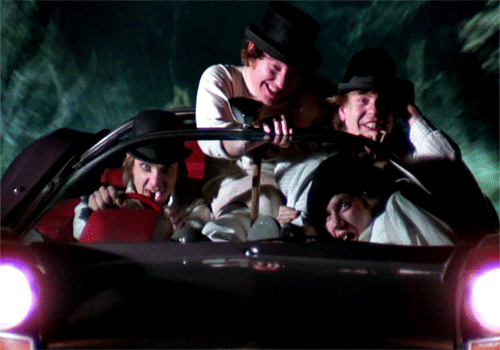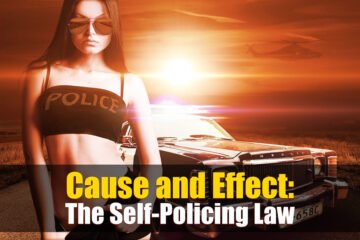 A Clockwork Orange
A Clockwork Orange
The movie, A Clockwork Orange stirred quite a bit of controversy when it was released. The film, directed by Stanley Kubrick and based on Anthony Burgess’s novel, delves into themes of violence, free will, and the role of government in controlling behaviour.
Here are some key points about the film’s controversy and themes:
Yob Culture: The term “yob” refers to a loutish, uncultured person, often associated with delinquent behaviour. The film portrays a dystopian future where youth culture, particularly represented by the character Alex, embodies this yob culture. Critics argued that it reflected societal fears about rising youth violence and disorder in urban areas. What concerned many, was the films overt statement that governments were actively involved in Dark Psychological experiments on it’s own public, by force. Many saw this as an attack on democracy. They chose not to ask themselves, if it were true. Instead, they had the film banned, so no-one else could question their assumptions of our governments benign intentions.
Violence and Media: The graphic violence depicted in the film led to significant backlash, with some viewing it as a glorification of brutality. Headlines at the time even labelled it as a film “for none of the family,” highlighting the societal discomfort with its content. The press, mainly all in favour of that ban.
This “graphic violence”, however, was quickly overtaken by the graphic violence increasingly found acceptable in horror movies, and it became acceptable, so long as whatever was being destroyed, was not human. Graphic violence became the dominant movie order of the day. Eventually A Clockwork Orange was released, and became the Cult Classic it is today.
This raises questions about hidden messages and prompts within society. Were we encouraged to ban the film for non-declared reasons? Was this film letting out secrets that we were being guided to suppress and forget?
Cultural Impact: Despite the controversy, “A Clockwork Orange” has become a significant cultural touchstone, often discussed in the context of media influence on behaviour and the nature of evil in society. It formed part of a wider genre of cult classics that typically embodied feelings of escape, or of our youthful angry rejection of anything that reminded us of our parents traditional values. That was the symbology of the Punk. Taken in the context of the early 70’s. This film could have stirred a revolution. Maybe it did? Maybe it’s banning caused that revolution to be one of fashion, rather than action?
Government Control: The film critiques the ineffectiveness of the government and the prison system. It suggests that rather than rehabilitating criminals, the state resorts to extreme measures, such as the Ludovico Technique, which involves forcing Alex to watch violent films while being administered a serum. This method is seemingly intended to condition him against violence, by forcing him to see horrific graphic imagery of violence and abuse, raising ethical questions about free will and the morality of state intervention. Not only that, but does behaviourism, the psychological “breakthrough”, that seems to have inspired the Ludovico Technique, really say that violence is prevented by training the offender on more violence?
A Clockwork Orange has had a profound impact on both philosophical and psychological thinking, and it continues to resonate with contemporary society.
Free Will vs. Determinism: The novel raises critical questions about free will. Alex, the protagonist, undergoes a process that strips him of his ability to choose, leading to debates about whether true morality can exist without the freedom to choose between good and evil. The film also asks us to question our assumptions about freedom. Does freedom include Alex’s right to be a violent bully? Is this government right in it’s “illegal” activities in trying to suppress him. In the movie, did this government not actually make him worse? At what point does a governmental “mistake”, become a deliberate and chosen action? Also, deep down, so long as it happens to someone else, do we really care?
Behavioural Psychology Critique: The story critiques behavioural psychology, particularly the use of aversion therapy as a means of controlling behaviour. This raises ethical questions about the morality of using such methods to modify human behaviour.
Structure vs. Agency: The tension between societal structure and individual agency is a central theme. The novel suggests that societal control can lead to the loss of personal agency, prompting discussions about the role of government and institutions in shaping behaviour. This clearly links to much earlier use of propaganda for social control using Dark Psychological concepts.
Aversion Therapy and Conditioning: The Ludovico Technique exemplifies aversion therapy and classical conditioning. It serves as a cautionary tale about the potential misuse of psychological techniques to manipulate behaviour, highlighting the ethical implications of such practices.
Impact on Mental Health Discussions: The portrayal of psychological manipulation in the novel has influenced discussions around mental health, particularly regarding the treatment of violent behaviour and the rights of individuals undergoing psychological treatment.
Comparisons with Contemporary Society

Violence and Media: The themes of ultraviolence and the influence of media on behaviour remain relevant today. Many discussions focus on how contemporary media can desensitize individuals to violence, similar to the effects depicted in the novel. This seems to be the opposite effect of aversion therapy, and one might wonder if the film itself is aversion therapy for the masses? Could this happen to you, if you stepped out of line? Is it two edged aversion? Stay in and isolate, to prevent any chance of meeting the local gang, and at the same time, reduce your own social interactions, make sure you will meet fewer people policers, looking to stop your fun?
Government Control and Surveillance: The novel’s exploration of state control resonates with modern concerns about surveillance and the extent to which governments can intervene in personal freedoms. This has become increasingly relevant in discussions about privacy in the digital age. One thing I suggest we all accept, is that privacy is a sham. Even in Europe with GDPR, there has been no enforcement. And it is clear, our own governments are not going to enforce it on themselves. We should assume that one possibility, is that at some point in the near future. All of our data, from every interaction, from all of our lives, will be accessible by our governments Artificial Intelligence System.

Youth Culture and Rebellion: The portrayal of youth gangs and rebellion in A Clockwork Orange reflects ongoing societal issues related to youth violence and the search for identity, prompting comparisons to contemporary youth movements and their struggles against societal norms. The film seems to have given a warning, which is now a prophecy, that we will all be hurdled into the inner cities, and subject to increasingly harsher reminders of our ongoing Dystopian reality.
It may be that this film was censored, so the governmental plan could work to counter any revolution that this and other thought leaders of their time were flagging, but whose thoughts are slipping into the past. This films release may have been delayed until Margaret Thatcher could take charge.
Personal Reflection
Back when A Clockwork Orange was being made, I remember the estate next door to ours became home to every problem family our council could find. As a result we now had a very large gang roaming our streets, and with violent intent. I lost part of my finger to a random act of violence when I was six, for example. So it could be said that our estate, without any public discussion, was effectively targeted for violence, and the council moved in their little army of violent thugs, who they knew, was going to organise, not reform. They had to know, as my six year old self knew, that they were going to gang together, and “exert their authority”, exactly as they did.
Now you might say that they did not expect that to happen. But, films like A Clockwork Orange got their ideas from the same places our council leaders could look: Behaviourism was on everyone’s tongues. However, our council, seemed to respond naively. Then were completely unable to undo what they had done. As a result, the “Police Proof” doors were installed, and that estate became another “do not go” zone, for our entire street, and those surrounding it. I was too young to know, but I do not think many said much about it. I think most had voted for that council, and had decided not to worry about it. In the very least, this was my first glimpse of Organisational Incongruence. And also, over time, the family myth became that it was my fault, and I’d had an accident. That gaslighting continued until we received a letter of apology, some 20 years later.
On the the other hand, the film took it’s suggestion of the impacts of this societal observation, very seriously. The film reflected concerns that things were not, in actuality, as transparent as our governments claimed. The film seemed to be warning us that these thugs might be a form of self-police parade – self-appointed vigilantes and more subtle approvers and disapprover’s that decide a target needs they guidance.
The film, seemed to be saying that Orwell’s 1984 was potentially already here. The film seemed to be suggesting that we should be looking for that very same Organisational Incongruence. from our real world governments. The film left a very disconcerting feeling that this societal control by our governmental and non-governmental organisations, was going to get worse. Potentially, a lot more violent. This was perhaps too revolutionary message to give to the current society?
Today, we see entire estates off-limits to the police. I’ve seen fire trucks on fire, the firemen being attacked by kids pelting them with stones, with myself taking a quick U-turn and marking that place another no-go. That event did not make it into the media, that would show our government to be out of control.
Knife attacks, on the other hand do. Our media seems to love those. They are also dropping a lots of hints about diminishing police force numbers. And our government is too poor to do anything major. We just have to know, it’s in control, but out of control, we can care for immigrants but not pensioners. That list could go on for quite some time, those we care for, those we don’t, those we prefer to gaslight, those we don’t. I personally think we really need to ask: Is this comedy of errors not deliberate? Let us see what has been done since this film first gave it’s warning:
Targeting of Estates: There is a growing discourse around the idea that certain council estates are disproportionately affected by violence and crime. Some studies suggest that social cleansing and the concentration of vulnerable families with anti-social and violent individuals can lead to increased tensions, violence and serious abuse within these communities.
Note: more than 50 years on, and we have yet to even start trying to tackle this “issue”. Does that mean it is actually a “nonissue”? Are we really motivated to deal with this “problem”?
Media Representation: Incidents like knife attacks definitely receive more media attention than the broader issues of community safety and the challenges faced by fire services or police forces. This selective reporting skews public perception and leads to a lack of awareness, and therefore, and official action of control about the underlying problems. This means our fears are increased (fear of the unknown), and our confusion at our governments lack of action, and support is increased, as is our sense of powerlessness. All governmental organisations seem to know how to make quick decisions, but only when the public impact is adverse. They are very good at cutting services, benefits, increasing taxes. However, more than 50 years on, we still seem to have the problems they seem to have created in the first place, and still continue herding the masses together, and increasing the levels of societal toxicity.
Shouldn’t we be saying something by now? Well, we do, and we vote in another government that promises change, then they get confused about the issue, or some other issue removes it from focus, and they carry on doing the same.
I should also note that recent government initiatives have aimed to address violence, particularly against women and girls, but there is criticism that these measures often do not extend to the root causes of violence in council estates. For instance, the government has committed to halving the prevalence of violence against women and girls within a decade. Might I suggest they will simply make it more difficult for those people to report those crimes?
There are calls for embedding domestic abuse specialists in emergency response teams to better address these issues. However, those women have no money and are homeless. Our government is not in the business of giving benefits to helpless women, or temporary, emergency shelter either. So that change, I suggest, will never happen, or if it does, it will encourage those women to go back home. Collectively, we seem to agree that this is for the best. This seems to be the truth of the matter. I’m not judging here, I’m just observing.
The lack of public discussion about the safety of certain areas has created a sense of isolation for residents. Lack of action after disasters such as the Grenfell Tower also add to the collective sense of increased fear and hopelessness.
Did you know? seven years after the Grenfell Tower disaster, not a single council seems to have completed their surveys of dangerous tower blocks? I suggest, therefore, that the enquiry due to start later this year (2025), will very quickly grind to a halt, and we may have to wait another seven years before it can continue. It may well take 30 years or longer for all of our tower blocks to be declared safe.
The Ludovico Technique
The Ludovico Technique is a controversial concept primarily featured in A Clockwork Orange. Here’s a detailed look at the technique and its theoretical underpinnings:
What is the Ludovico Technique?

The Ludovico Technique is depicted as a form of aversion therapy designed to condition individuals to avoid violent and criminal behaviour. Here’s how it works:
- Strapping the Subject: The individual is restrained in a chair, with their eyes held open using specula, forcing them to watch a series of violent films.
- Forced Hallucinatory Experience: The subject, Alex, is given a drug, Serum 114, via eye-drops, a method used by LSD users in the day. The drug makes the images terrifying to Alex. His agitation and terror, dramatically amplified.
- Inducing Nausea: While watching these films, the subject is administered drugs that induce feelings of nausea and discomfort.
- Behaviour Modification: The goal is to create a strong aversion to violence, effectively conditioning the subject to feel sick at the thought of engaging in violent acts.
Theoretical Inspirations
While the Ludovico Technique is fictional, it draws inspiration from several real-world psychological theories and practices:
- Aversion Therapy: This is a real psychological treatment that uses unpleasant stimuli to condition individuals away from undesirable behaviours. The technique in the story amplifies this concept to an extreme level.
- Classical Conditioning: The method resembles Pavlovian conditioning, where a neutral stimulus (in this case, violence) is paired with an unconditioned stimulus (nausea) to elicit a conditioned response (aversion to violence).
- Behaviourism: The technique reflects behaviourist principles, particularly the idea that behaviour can be modified through reinforcement and punishment.
Ethical Considerations
The portrayal of the Ludovico Technique raises significant ethical questions about free will, the morality of using such extreme measures for behaviour modification, and the implications of stripping individuals of their ability to choose.
Cultural Impact
The Ludovico Technique has sparked discussions about the nature of violence, free will, and the role of government in controlling behaviour, making it a powerful symbol in both literature and film.
The Role of Drugs
In the Ludovico Technique, drugs play a crucial role in the process of aversion therapy. Specifically, the drug used in the film adaptation of A Clockwork Orange is called Serum 114. Here’s a bit more detail about it:
Purpose of the Drug: The drug is administered to induce feelings of nausea and discomfort, as well as possibly enhanced visual stimulation while the subject, Alex, is forced to watch violent films. This combination aims to create a strong aversion to violence.
Pavlovian Association: The use of the drug is designed to establish a Pavlovian association between the violent imagery and the unpleasant physical reaction, effectively conditioning the subject to feel sick at the thought of engaging in violent acts.
Ethical Implications: The use of drugs in this context raises significant ethical questions about the morality of using such methods for behaviour modification and the implications for free will.




0 Comments